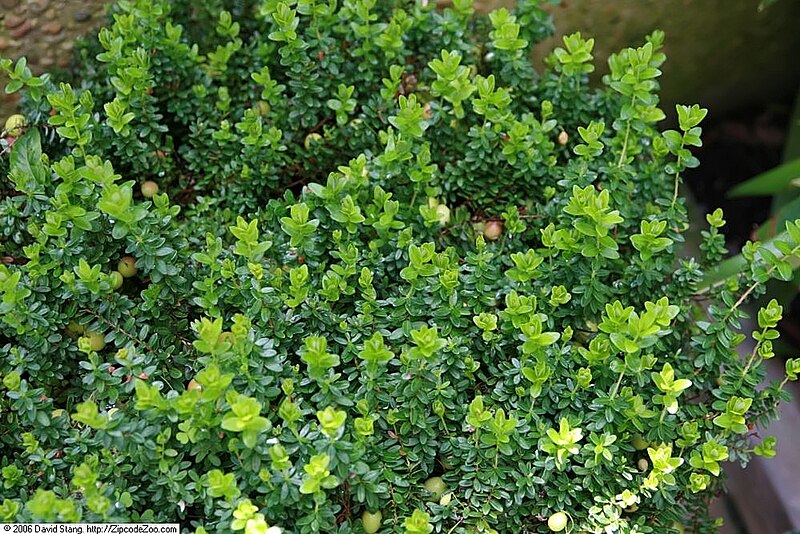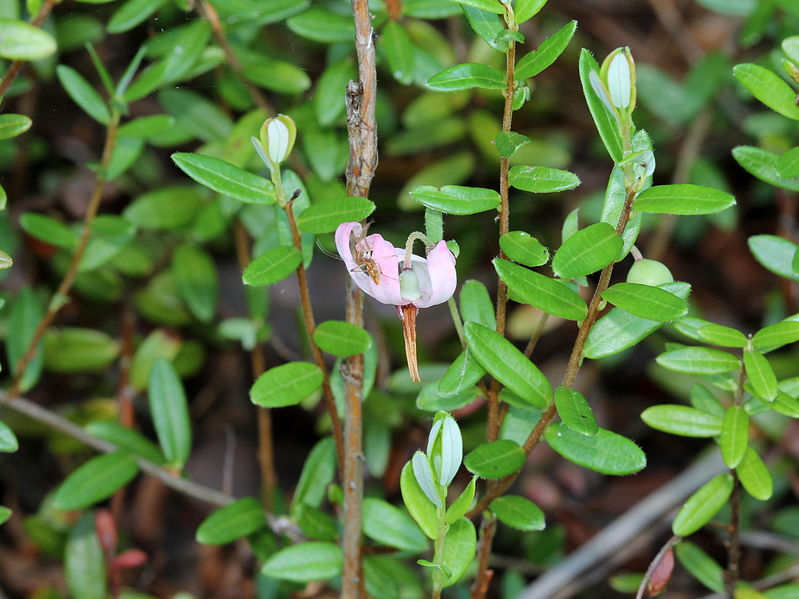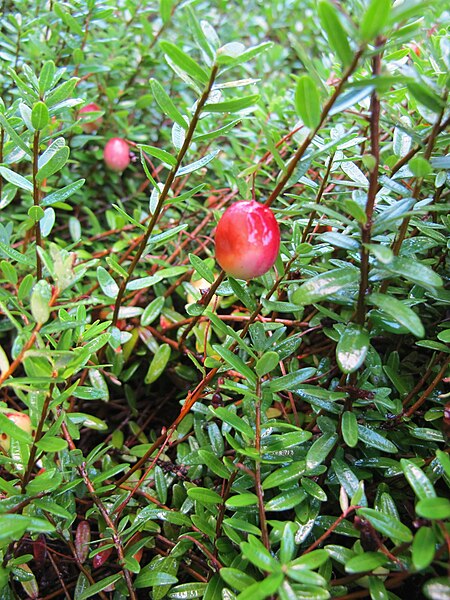Large Cranberry Identification – Vaccinium macrocarpon
Heads up
Venture into the marshy realms of bogs and swamps, and you might encounter a small, low-growing plant with striking red berries: the Large Cranberry, scientifically known as Vaccinium macrocarpon. A member of the Ericaceae family, commonly referred to as the Heath family, this plant plays a prominent role in festive dinners across America.
Large Cranberry: Key Parts in Photos



How to identify Large Cranberry
The Large Cranberry has simple leaves. They grow alternately on the stem. These leaves are erect and are known to be leathery stay green throughout the year. Each leaf is up to 2/3 inch long. Their shape can be described as oblong-elliptic – think of an elongated oval. Both the base and the tip of the leaf are bluntly rounded, and they don’t have any teeth along the edges. The upper surface of the leaf is a dark green and has a shiny finish, while the lower surface is a pale green. Sometimes, the leaf edges may have sparse tiny hairs.
Younger stems on the plant are erect. These newer stems have a greenish-brown color. As they age, they turn a dark reddish-brown, spread out horizontally. They can even root at nodes as they spread. This characteristic makes the plant look like it’s hugging the ground.
The flowers of the Large Cranberry vary in color from white to pinkish. Their appearance is unique, with four narrowly lance-shaped petals that curl back – reminiscent of a lily. Within the flower, you’d spot a tight cluster of stamens and a single style.
Now, to the most famous part of the Large Cranberry – the berry. When mature, these round berries are shiny and dark red. These berries often linger on the plant through winter, waiting to be discovered by an observant eye or a hungry animal.
